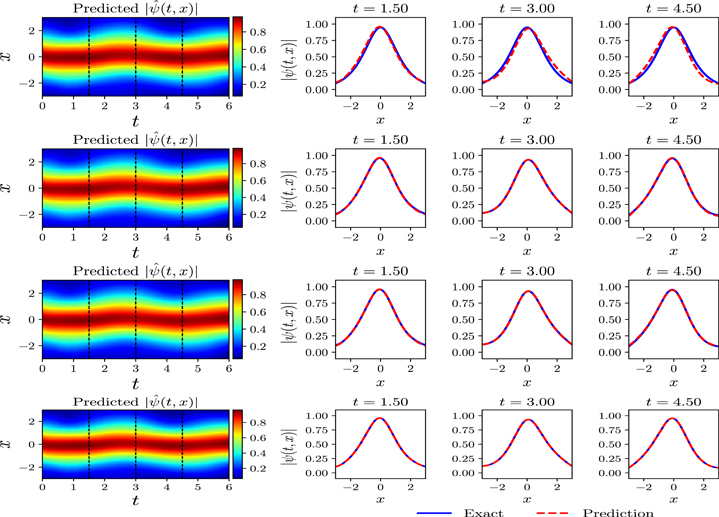Solving forward and inverse problems of the nonlinear Schrödinger equation with the generalized ${ \mathcal P }{ \mathcal T }$-symmetric Scarf-II potential via PINN deep learning

|
Solving forward and inverse problems of the nonlinear Schrödinger equation with the generalized ${ \mathcal P }{ \mathcal T }$-symmetric Scarf-II potential via PINN deep learning |
| Jiaheng Li,Biao Li |
| Figure 5. The optimization steps' influence on the learning ability of this complex-valued PINNs in the defocusing NLSE with the generalized ${ \mathcal P }{ \mathcal T }$-symmetric Scarf-II potential and initial boundary value conditions in Section |

|